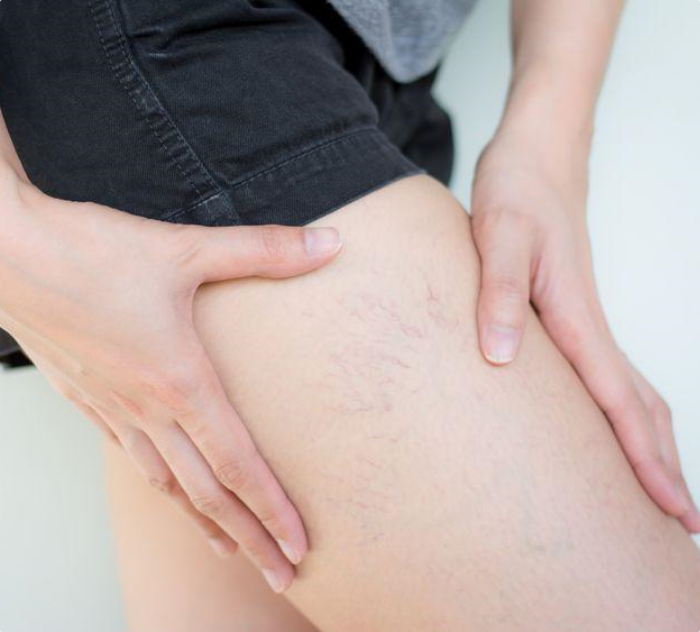
What are spider veins?
Spider veins are networks of tiny red, blue, or purplish blood vessels on your skin. Spider veins aren’t dangerous, so they’re more of a cosmetic issue than anything. It’s worth bearing in mind that having spider veins does mean you’re more likely to develop varicose veins, which are large, bulging veins in your legs that can be painful.
Spider veins are most likely to appear on your face and legs, and they can affect your self-esteem. If you have spider veins that affect you in this way, the team at Tinsley Surgical provides effective treatments to eliminate them. These treatments may include wearing compression stockings to improve blood flow and reduce discomfort, as well as vein treatment options such as sclerotherapy or laser therapy to target the vein wall and treat spider veins directly. Additionally, lifestyle changes such as increasing physical activity and avoiding long periods of sitting or standing can also help manage spider veins and reduce the risk factors for varicose veins.
Upload your online consultation VeinPix images here.
Schedule AppointmentCommonly asked questions about spider veins:
Spider veins indicate a problem with the valves in your veins. Arteries take blood that’s enriched with oxygen away from your heart, while veins bring the used blood back to your heart. Consequently, your veins have valves in them that allow blood to flow toward your heart but stop it from going the other way.
Sometimes the valves stop working correctly, so blood starts to leak back the wrong way, building up and causing the veins to swell and show through your skin. When this happens to the larger blood vessels, you have varicose veins. When it affects the tiny blood vessels called capillaries, you have spider veins.
Risk factors for spider veins include:
- Standing for long periods
- Being overweight
- Have relatives with spider veins
- Being pregnant
- Using birth control pills
- Taking hormone replacement therapy
- Going through menopause
If you have spider veins, the team at Tinsley Surgical can assess them online, using a system called VeinPix. You fill in a form and questionnaire on the Tinsley Surgical website, attach photos of your spider veins, and send everything to the team for evaluation. This method saves taking time out of your busy schedule for a visit and is a far more convenient way of receiving your assessment.
The traditional treatment method for spider veins is sclerotherapy. During this intervention, your provider injects a chemical called a sclerosant into the affected veins. This shrinks the veins and hardens them, so blood has to find a different route. After 4 to 6 weeks, the treated veins disappear.
The team at Tinsley Surgical uses an advanced form of treatment called polidocanol foam (Asclera) or Varithena® foam sclerotherapy. It works similarly to standard sclerotherapy, but instead of injecting a liquid sclerosant, the team uses a sclerosant foam.
Foam sclerotherapy has several advantages. For starters, the foam doesn’t mix with your blood in your vein like a liquid sclerosant. Therefore, it works longer and is more effective than liquid sclerotherapy. Also, because of the foam’s thickness, the team at Tinsley Surgical can view your veins using ultrasound, which improves the treatment’s effectiveness.
